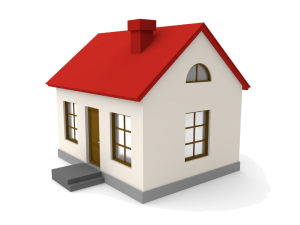 One of the most common questions that home buyers have is how much they need to save for a down payment on a house. A down payment is the amount of money that you pay upfront when you buy a home, and it usually ranges from 3% to 20% of the purchase price. The amount of down payment you need depends on several factors, such as the type of loan you choose, the price of the home, your credit score, your income, and your savings.
One of the most common questions that home buyers have is how much they need to save for a down payment on a house. A down payment is the amount of money that you pay upfront when you buy a home, and it usually ranges from 3% to 20% of the purchase price. The amount of down payment you need depends on several factors, such as the type of loan you choose, the price of the home, your credit score, your income, and your savings.
To help you figure out how much to save for a down payment, here are some steps that you can follow:
- Determine the price range of the home you want to buy. You can use online tools such as Zillow’s home affordability calculator or NerdWallet’s home affordability calculator to estimate how much house you can afford based on your income, debt, and other expenses. You can also browse online listings or talk to a real estate agent to get an idea of the market prices in your area.
- Decide what type of loan you want to get. There are different types of loans that have different down payment requirements. For example, conventional loans typically require a down payment of at least 3% to 5%, while FHA loans require a down payment of at least 3.5%. VA loans and USDA loans do not require any down payment, but they have other eligibility criteria. You can compare different loan options and rates using online tools such as pmtCalcs.com’s PITIA calculator or Extra Payment calculator.
- Calculate how much down payment you need based on the price range and the loan type. For example, if you want to buy a home that costs $300,000 and you want to get a conventional loan with a 5% down payment, you will need to save $15,000 for the down payment. You can use online tools such as the aforementioned calculators to do the math for different scenarios.
- Factor in closing costs and other expenses. Besides the down payment, you will also need to pay for closing costs, which are fees and charges associated with finalizing the loan and transferring the ownership of the home. Closing costs typically range from 2% to 5% of the purchase price, depending on the location, the lender, and the loan type. You may also need to pay for other expenses such as appraisal fees, inspection fees, title insurance, homeowners insurance, property taxes, and moving costs.
- Set a savings goal and a timeline. Once you know how much money you need for the down payment and other expenses, you can set a realistic savings goal and a timeline for achieving it. For example, if you need to save $20,000 in total and you want to buy a home in two years, you will need to save about $833 per month.
Saving for a down payment on a house can be challenging, but it is not impossible. With some planning, budgeting, and discipline, you can achieve your homeownership dream sooner than you think. Here are some tips that can help you save more money for your down payment:
- Automate your savings. One of the easiest ways to save money is to set up a direct deposit or an automatic transfer from your checking account to a separate savings account dedicated for your down payment. This way, you can save money without thinking about it or being tempted to spend it on something else.
- Cut back on unnecessary expenses. Another way to save money is to reduce your spending on things that are not essential or important for your well-being or happiness. For example, you can cancel subscriptions that you don’t use or need, cook at home instead of eating out, shop around for cheaper alternatives or discounts, or sell items that you don’t use or need.
- Increase your income. A third way to save money is to increase your income by finding ways to earn more money or make use of your existing assets. For example, you can ask for a raise or a promotion at work, look for a side hustle or a freelance gig, rent out a spare room or parking space, or invest in stocks or bonds that pay dividends or interest.
- Take advantage of any savings help available. A fourth way to save money is to take advantage of any savings help that may be available from your employer, your bank, your government, or other sources. For example, some employers offer matching contributions for retirement accounts or other savings plans that you can use for your down payment. Some banks offer high-interest savings accounts or certificates of deposit that can help your money grow faster. Some government agencies or nonprofit organizations offer grants, loans, or programs that can help you with your down payment or closing costs. You can research online or talk to a financial advisor or a housing counselor to find out what options are available for you.
We hope this blog post has been helpful and informative for you. If you have any questions or comments, please feel free to leave them below. Thank you for reading and happy saving!